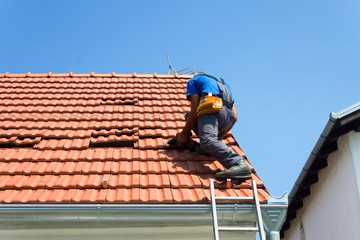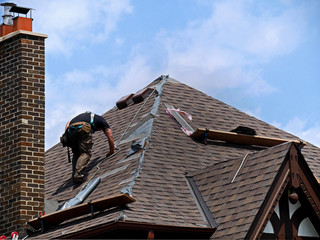Performing regular roof maintenance can extend the life of your home’s roof. It also helps to avoid costly repairs and replacements later. Typically, roof maintenance should be performed on a biannual basis. Construction ensures that problems are detected and fixed before they can worsen.

Flashing is a layer of metal that helps prevent water from entering certain areas of your roof. These vulnerable sections include chimneys, skylights, and vents. This protective material is made of aluminum, copper, or steel to resist corrosion. It’s installed around these exposed roof surfaces to keep water away and extend the lifespan of your shingles.
Inspecting and replacing your flashing is essential to keeping your roof in top condition. This will help you prevent leaks and protect your home from moisture damage that can lead to rot, mold, and drywall failure. The most common type of flashing is valley flashing, which is typically a strip of metal that runs along the valleys where two roofing planes meet. When valley flashing is displaced, rainwater can seep through the seam between shingles.
Gutters are designed to help collect rainwater and carry it away from the foundation of your home. If clogged with debris, however, they can cause overflow and leaks in your roof. It is recommended that homeowners clean their gutters a minimum of once a year. This is especially important if you have overhanging trees, and after heavy storms.
In order to clean your gutters safely, it is a good idea to use the right equipment. This includes a sturdy, extendable ladder and protective gear like thick gloves and suitable clothing. Then, start with one gutter near the downspout opening and spray water from a garden hose down the channel until the entire length is clear. Gather any dirt and debris that collects, and dump it on a drop cloth. Repeat the process until all of your gutters are free of debris. This should only take a few minutes.
Trees can provide shade to cool your roof, protect the home from high winds, and improve property value. But, they can also pose a serious risk to the health of your home’s roof if left unattended.
Trimming trees on a regular basis can keep them healthy and help prevent potential damage. When tree limbs fall onto your roof, they can cause significant damage to the structure of your home, especially if they hit the gutters or other parts of your roof.
Trees can be cut selectively for a variety of reasons, including aesthetics, safety, and to encourage new growth or flowers. The ideal time to prune a tree is during dormancy, when the cut wounds have less chance of developing disease or pest infestations.
A roof’s shingles improve the appearance of your home and also function as a waterproofing barrier. However, these shingles can become cracked, damaged or split over time. The key to ensuring a healthy roof is to regularly inspect it. A regular inspection can help you identify problems early on and avoid costly repairs down the road.
Shingles that are missing or are loose can lead to leaks which could cause extensive damage to your home. It’s also common for shingles to show signs of wear or degradation such as bald spots, granule loss and severe curling.
Inspect the shingles from a safe distance and through binoculars. It’s important not to climb up the roof, as this is a dangerous activity that can result in more harm than good. If you’re worried about the condition of your roof, call a local roofing contractor to conduct a comprehensive roof inspection.
Roof inspections are crucial to identify any structural problems. For example, leaks in shingles or tile roofs may be a sign of a problem with the caulking and sealant. This can result in mold and watermarks. During the inspection, make sure to look for signs of cracks, rot, and fungus. You should also check the bends in the elements and sagging pipes. Pipes and equipment supports should also be inspected for cracks in the base. If they are deflected, they may be tearing into the roof membrane.
In addition to maintaining your roof’s condition, you should also keep a record of the work performed. Keep hard and digital copies of all maintenance records. These records will be useful if you decide to sell your property in the future. Documentation also helps boost resale value. Keep copies of your roof’s specs, product sheets, warranty paperwork, shop proposals, drawings, and any repairs. Roofing maintenance is a good idea for your home, because it will help protect you from costly repairs and extend the life of your building.
